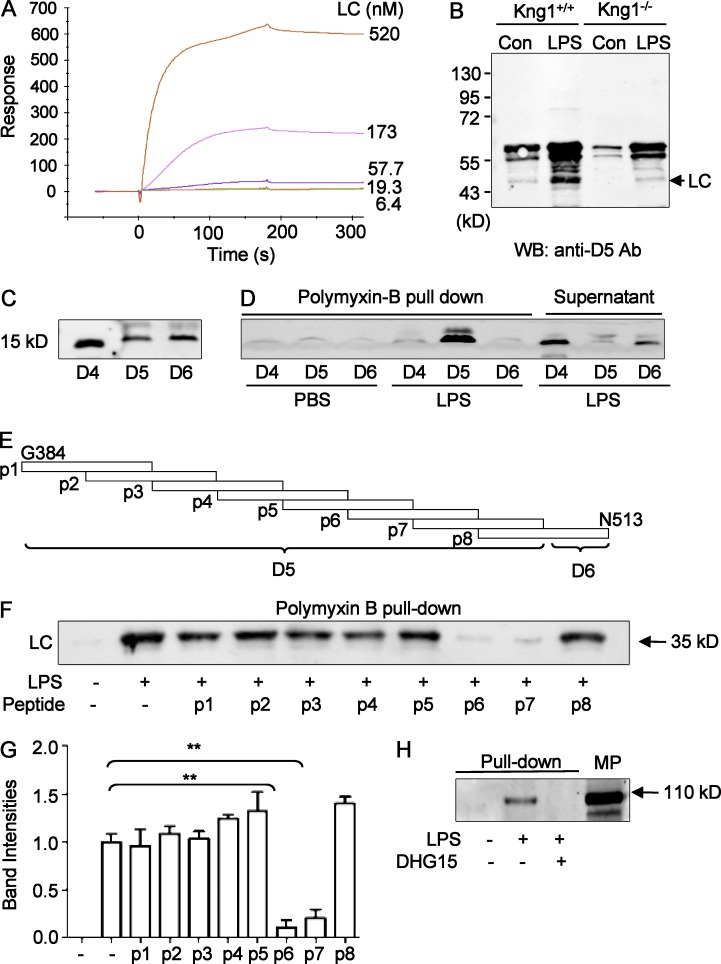Figure 8.
The DHG15 region in D5 is the site of HK responsible for LPS binding. (A) Analysis of LC binding to LPS using SPR assay showing a Kd of 1.52 × 10−9 M. One representative experiment out of three independent experiments is shown. (B) LC is released from LPS-treated plasma and forms a complex with LPS. Plasma (200 µl, diluted 1:1 with PBS) from WT mice and Kng1−/− mice was incubated with either 40 µl control Sepharose beads or LPS-conjugated Sepharose beads at room temperature for 2 h. After washing, proteins associated with the beads were analyzed by immunoblotting using an anti-D5 of HK antibody. Data are representative of two independent experiments. (C) Recombinant D4, D5, and D6 domains from HK-LC generated from Sf9 insect cells analyzed by anti-His immunoblotting (left). (D) The recombinant D4, D5, and D6 domains (10 µg/ml) were incubated in a volume of 200 µl with either PBS or LPS (25 µg/ml), respectively, followed by incubation with polymyxin B beads. The bead-associated proteins were then analyzed by anti-His immunoblotting. Data are representative of three independent experiments. (E) The indicated variety of 30-mer peptides (p1–p8) derived from the D5 and D6 domains were synthesized. (F) 25 µg/ml LPS was preincubated with peptides p1–p8 (50 µg/ml), followed by incubation with 10 µg/ml HK-LC. After pull-down with polymyxin B beads, the bead-associated proteins were analyzed by anti-His immunoblotting. The experiments were performed in triplicate, and the band density of LC was quantitated (G). Data were analyzed using an unpaired Student's t test and are representative of two independent experiments. **, P < 0.01. Data are expressed as mean ± SEM. (H) As indicated, 40 µl LPS-conjugated Sepharose beads were preincubated with, or without, 100 µg/ml DHG15 peptide, followed by incubation with 100 µl of mouse plasma at room temperature for 2 h. The beads were then washed three times with PBS containing 0.1% Triton X-100, and the proteins associated with beads were subjected to SDS-PAGE and immunoblotting with an anti-HK antibody. Data are representative of three independent experiments.

